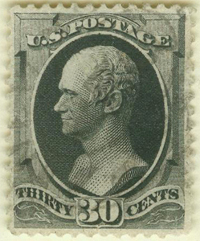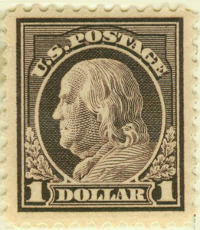
Discussion - Member to Member Sales - Research Center

Discussion - Member to Member Sales - Research Center


09:32:37pm
The price seemed a little steep, but I really liked the block and I didn't have the error shown.

Login to Like
this post
I'm not an expert, but here's my understanding FWIW. In intaglio printing, the die is first engraved and then hardened. (Don't ask me how; I'm not a chemist or physicist.) A curved transfer roll is then pressed into it to receive a negative impression of the image on the die. This transfer roll is then hardened and used to impress multiple stamp images into the printing place. This was/is the skilled trade of siderography. If any sort of error was made, the image would be burnished out and then re-entered. If the burnishing was incomplete, vestiges of the origina transfer would remain on the plate. Or perhaps a slight hiccup in entering one of the images would go unnoticed, producing a slight doubling of a portion of the stamp image.

Login to Like
this post

08:05:31am
Very close to what I've read, but explained much more clearly. Thanks very much for your help, and you sound like an expert to me!!!
If anyone looks at the link the re-entry appears to be the small horizontal lines in the outer posts of stamp #4 in the top row. For some reason this stamp has several reentries mentioned in Uni-trade but none actually shown. I found an article on line about this stamp and several different reentries are shown. If anyone is interested I'll give the link ( https://re-entries.com/nfld5-160_pictori ... ). It must have been a poorly made plate!!

1 Member
likes this post.
Login to Like.
Harvey
Here is much better clear information you want.
Go to "WWW.re-entries.com"
Select the first one.
Select "re-entry terms", you will be able to read what you are looking for.
Bigp had the process backwards and incomplete

1 Member
likes this post.
Login to Like.

10:09:25am
Thanks for the link, it looks great!! I'll have a good read later. It's really amazing the number of re-entries some stamps have. If a collector tried to get all of them for a certain country, say Canada, it would take a lot of searching.

1 Member
likes this post.
Login to Like.
Back when I had a bunch! I think, therefore I am - I think! Descartes, sort of!
28 Nov 2022
09:32:37pm
I just bought a nice block of Newfoundland stamps because two of them had an error and one had a re-entry. I know what re-entries look like - extra marks on a stamp that shouldn't be there and are quite often repeated from other areas of the same stamp. But how exactly does the procedure happen? I read the explanation in my Canada Unitrade but it didn't make a lot of sense to me. Can anyone explain the process so even an idiot like me can understand it? In case anyone is interested here is a link to the block I picked up. https://www.ebay.ca/itm/234638155442
The price seemed a little steep, but I really liked the block and I didn't have the error shown.

Login to Like
this post
10:04:55pm
re: Exactly how is a re-entry produced?
I'm not an expert, but here's my understanding FWIW. In intaglio printing, the die is first engraved and then hardened. (Don't ask me how; I'm not a chemist or physicist.) A curved transfer roll is then pressed into it to receive a negative impression of the image on the die. This transfer roll is then hardened and used to impress multiple stamp images into the printing place. This was/is the skilled trade of siderography. If any sort of error was made, the image would be burnished out and then re-entered. If the burnishing was incomplete, vestiges of the origina transfer would remain on the plate. Or perhaps a slight hiccup in entering one of the images would go unnoticed, producing a slight doubling of a portion of the stamp image.

Login to Like
this post
Back when I had a bunch! I think, therefore I am - I think! Descartes, sort of!
29 Nov 2022
08:05:31am
re: Exactly how is a re-entry produced?
Very close to what I've read, but explained much more clearly. Thanks very much for your help, and you sound like an expert to me!!!
If anyone looks at the link the re-entry appears to be the small horizontal lines in the outer posts of stamp #4 in the top row. For some reason this stamp has several reentries mentioned in Uni-trade but none actually shown. I found an article on line about this stamp and several different reentries are shown. If anyone is interested I'll give the link ( https://re-entries.com/nfld5-160_pictori ... ). It must have been a poorly made plate!!

1 Member
likes this post.
Login to Like.
08:48:35am
re: Exactly how is a re-entry produced?
Harvey
Here is much better clear information you want.
Go to "WWW.re-entries.com"
Select the first one.
Select "re-entry terms", you will be able to read what you are looking for.
Bigp had the process backwards and incomplete

1 Member
likes this post.
Login to Like.
Back when I had a bunch! I think, therefore I am - I think! Descartes, sort of!
29 Nov 2022
10:09:25am
re: Exactly how is a re-entry produced?
Thanks for the link, it looks great!! I'll have a good read later. It's really amazing the number of re-entries some stamps have. If a collector tried to get all of them for a certain country, say Canada, it would take a lot of searching.

1 Member
likes this post.
Login to Like.

